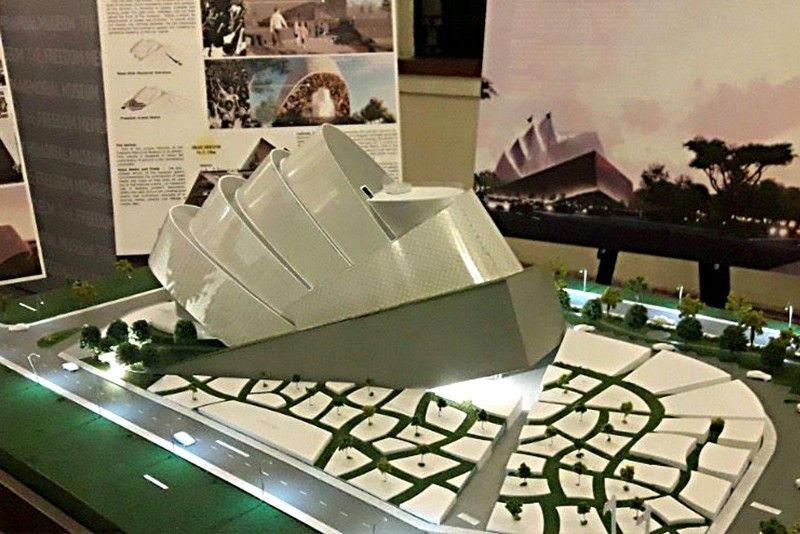‘Brutalist’ martial law museum to rise in UP Diliman

MANILA, Philippines — The martial law museum to rise within the University of the Philippines (UP)’s Diliman campus will be a “brutalist” architectural structure, designed after a clenched fist to memorialize the struggles of those who fought against the Marcos dictatorship.
The design, called “Fall of Brutal,” by a group of freelance architects, was chosen by human rights bodies as the winning design of the Freedom Memorial Museum, created by a 2013 law – Republic Act 10368 – that provides for reparation and recognition of human rights victims during the late dictator Ferdinand Marcos’s regime.
The law earmarks a P500-million budget for the museum, pooled from the accrued interests of the P10-billion Marco’ ill-gotten wealth forfeited in favor of the Philippine government.
Mark Anthony Pait, Mark Angelo Bonita and Wendell Crispo were P1 million richer after winning the design competition commissioned by the Human Rights Violations Victims’ Memorial Commission during the awarding ceremony at the National Museum Wednesday night.
In an interview, Pait explained that the facade of the museum was inspired by a clenched fist, most apt for a museum to rise within the UP Diliman campus, where the series of demonstrations against the Marcos dictatorship escalated into the First Quarter Storm during the 1970s.
The “brutalist” architectural design was patterned after the likewise brutalist style of buildings during the Marcos regime, such as the Cultural Center of the Philippines and the Philippine International Convention Center, that evoked the iron fist power of the dictator.
But the design used to perpetuate the Marcos’ “edifice complex” will be used this time to memorialize the victims of the dictator’s brutal rule, Pait said.
“Since these edifices purportedly show their so-called ‘Golden Years,’ we used the same edifice to remind people of the untold stories (of abuse and repression),” Pait said of the soon to rise seven-story building.
The building will be erected on a spacious, open but dried landscape, to symbolize the dire effects of the nine-year martial rule.
The clenched-fist facade will bear flower patterns of the ikat, patadyong, Moro and T’boli textiles to illustrate the “beauty of democracy unfolding” like a flower after decades of resistance that culminated in a peaceful people’s revolt.
“The blend of raised fist and flower petals form of the museum aims to communicate nonviolence resistance – symbolizing the true power of democracy,” the architects said of their design.
Inside, museum goers will pass through a narrow alley to the lobby where a ceiling mural of the victims will be mounted.
The Aviation Security Command (Avsecom) military van, where Ninoy Aquino breathed his last after his assassination at the airport 36 years ago, will be the centerpiece of the brutalist style museum.
“We want to translate the story of the martial law era into the architectural design, to give meaning and experience during martial law. It’s not our architecture, it’s the architecture of the Filipino people and our history,” Pait said.
The Freedom Memorial Museum is targeted to be opened on Sept. 21, 2022, the 50th anniversary of the declaration of martial law, Commission on Human Rights chairman Chito Gascon said during the event.
- Latest
- Trending
























